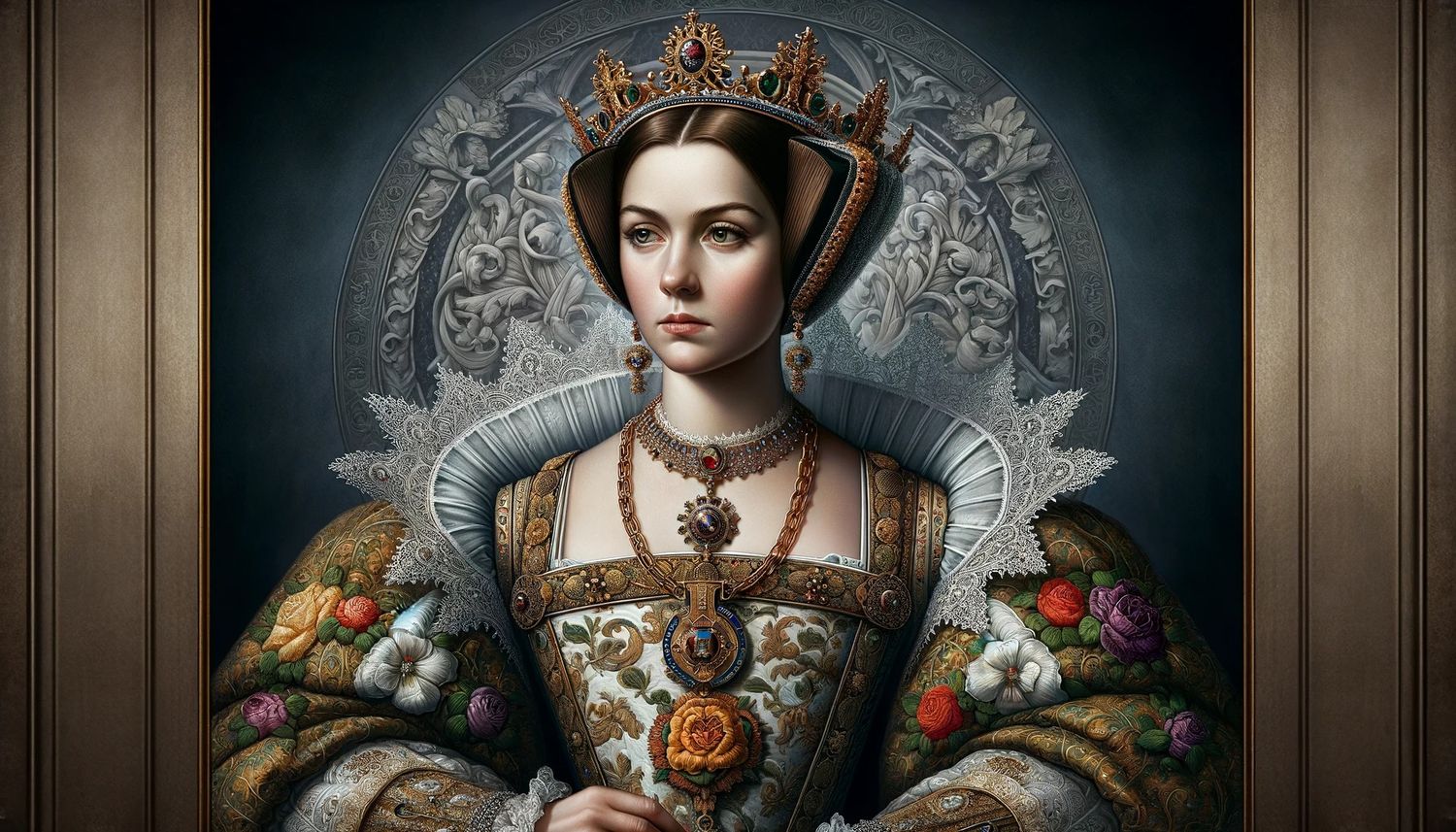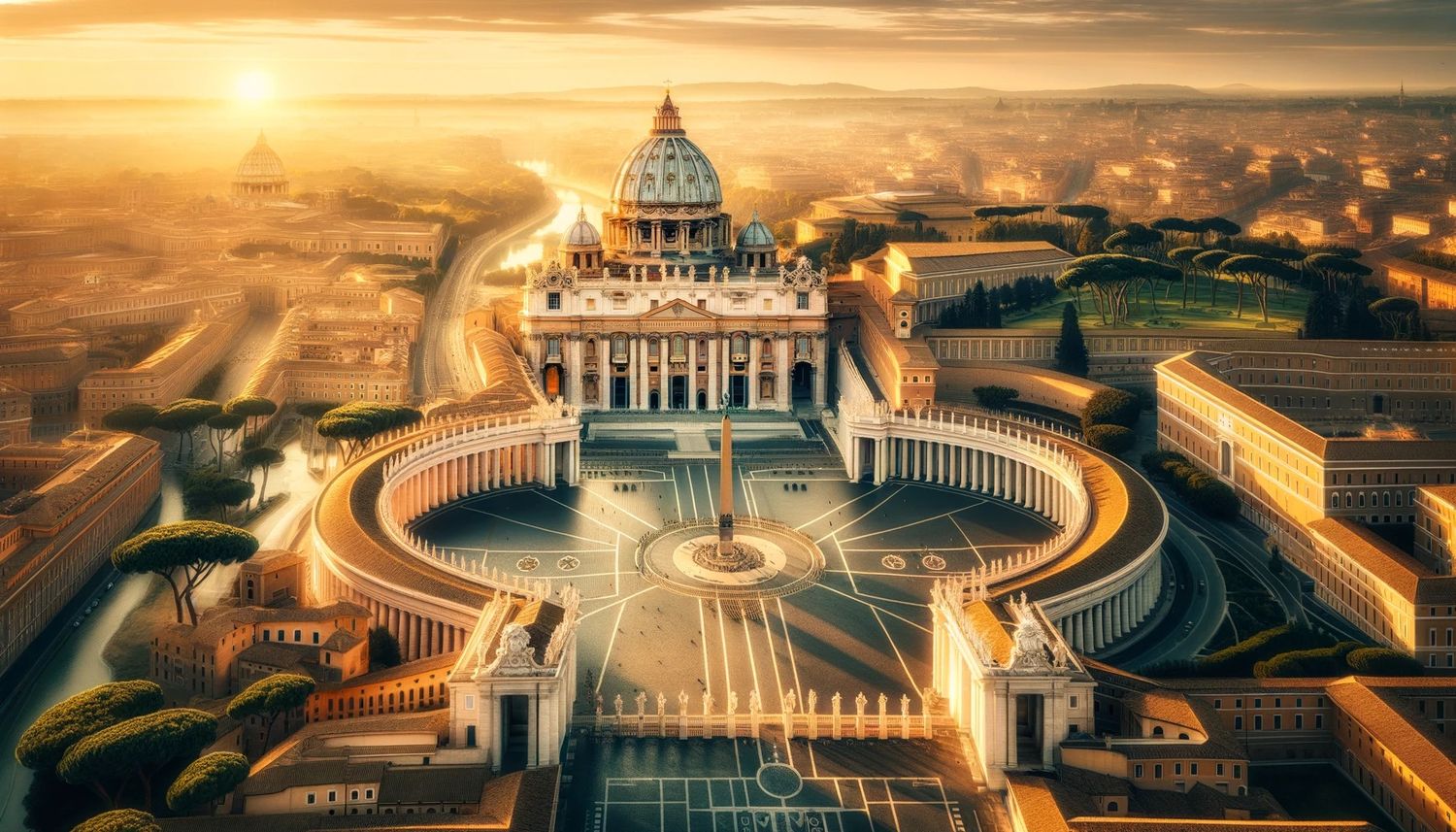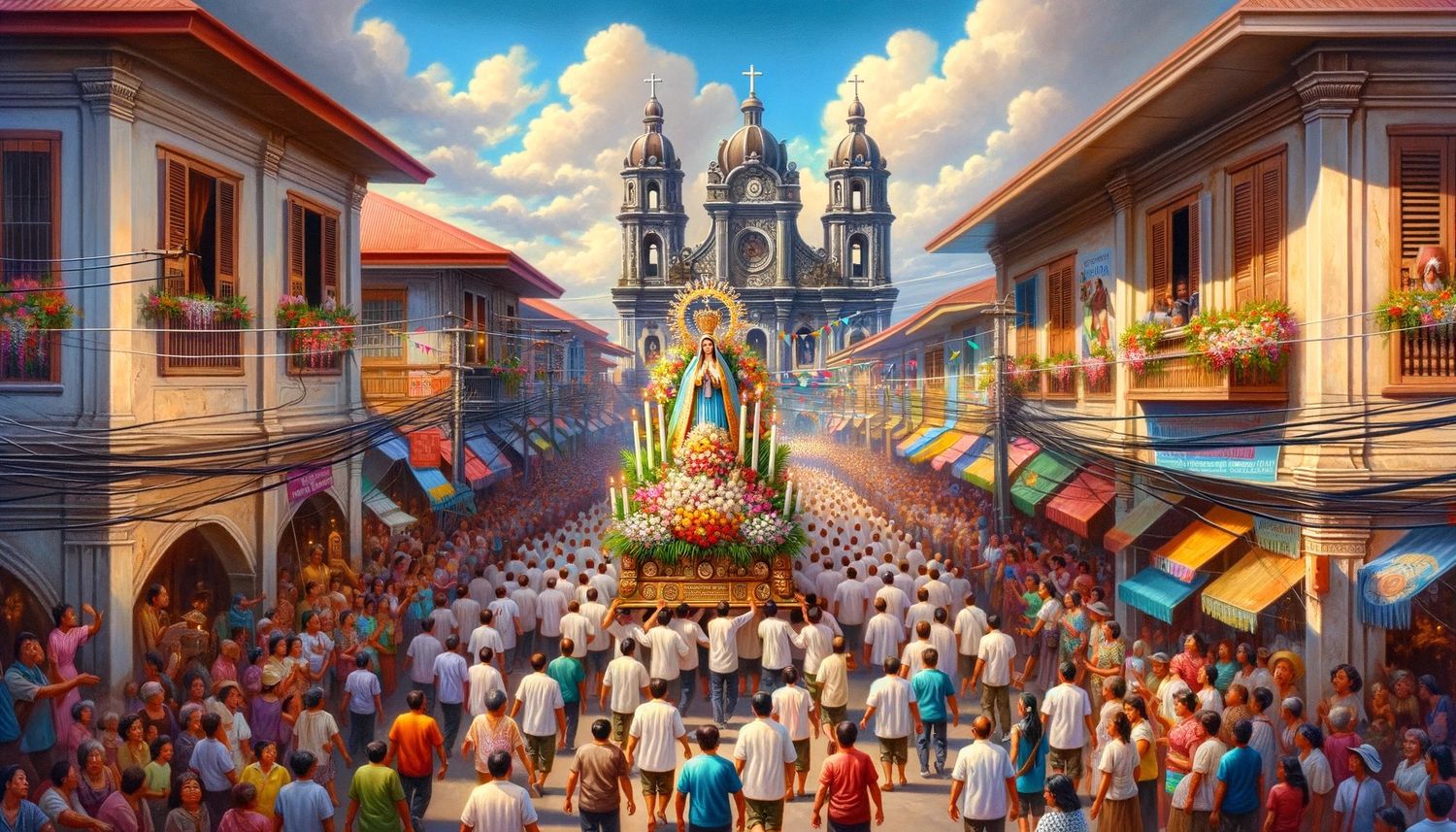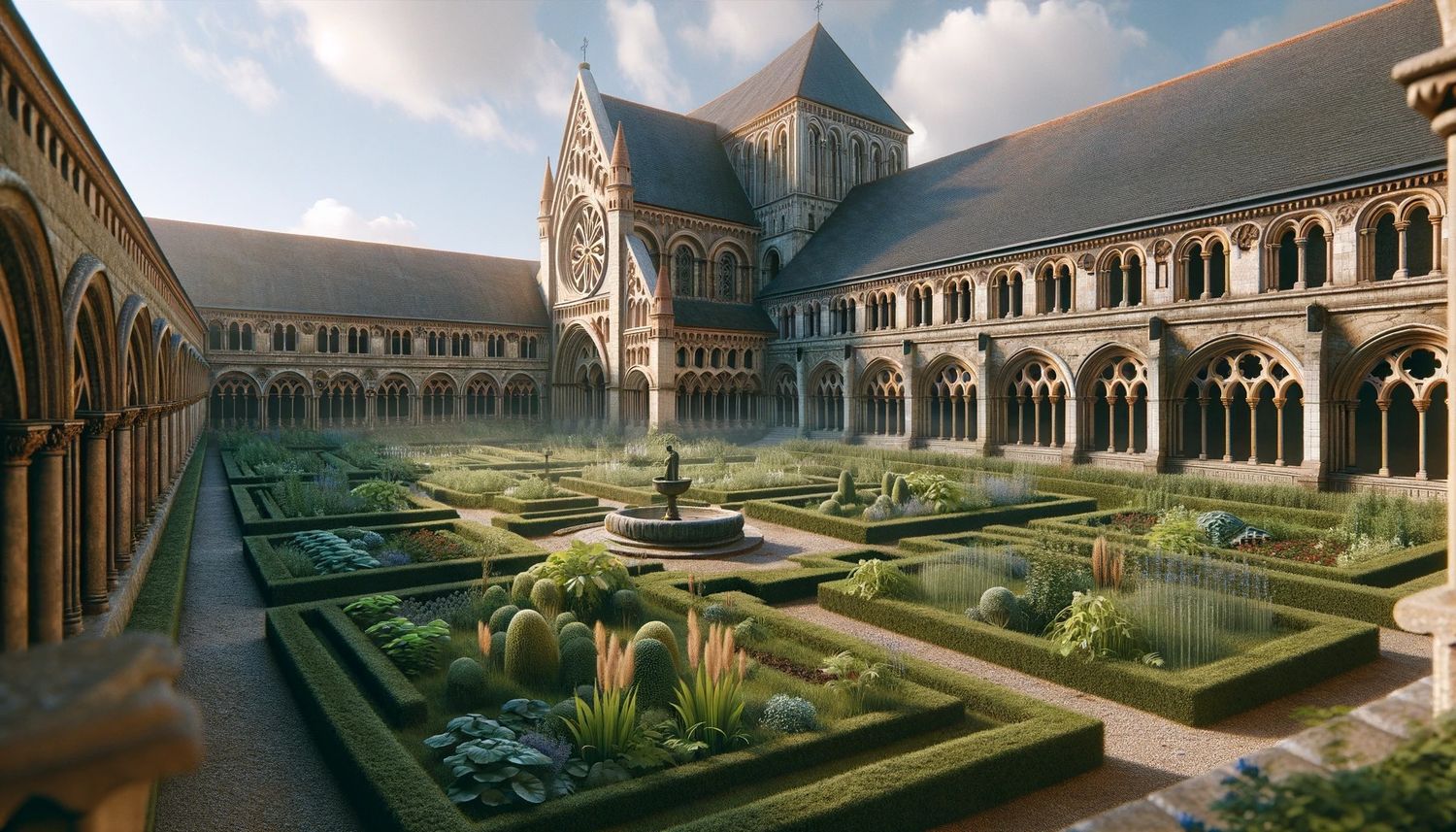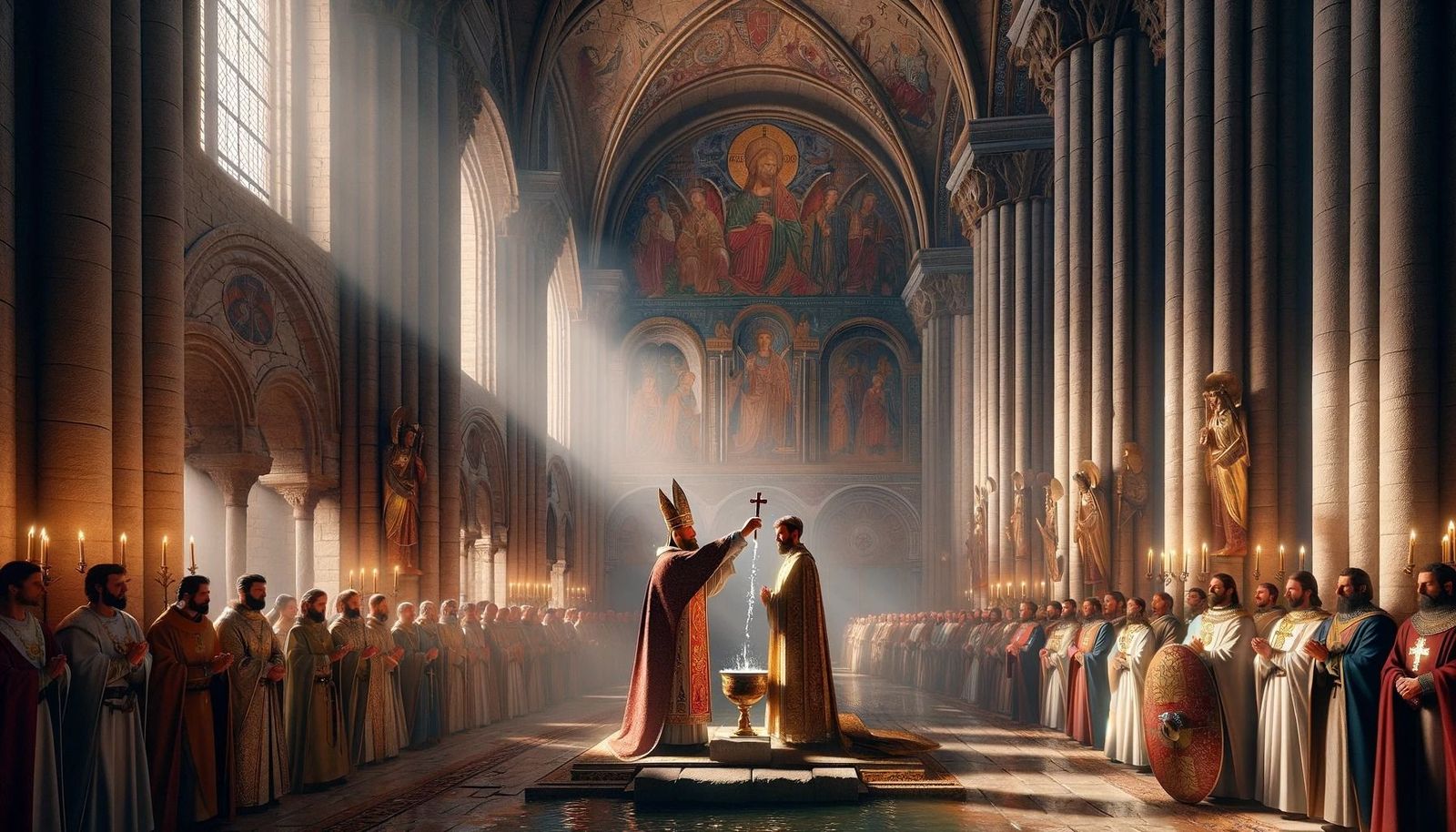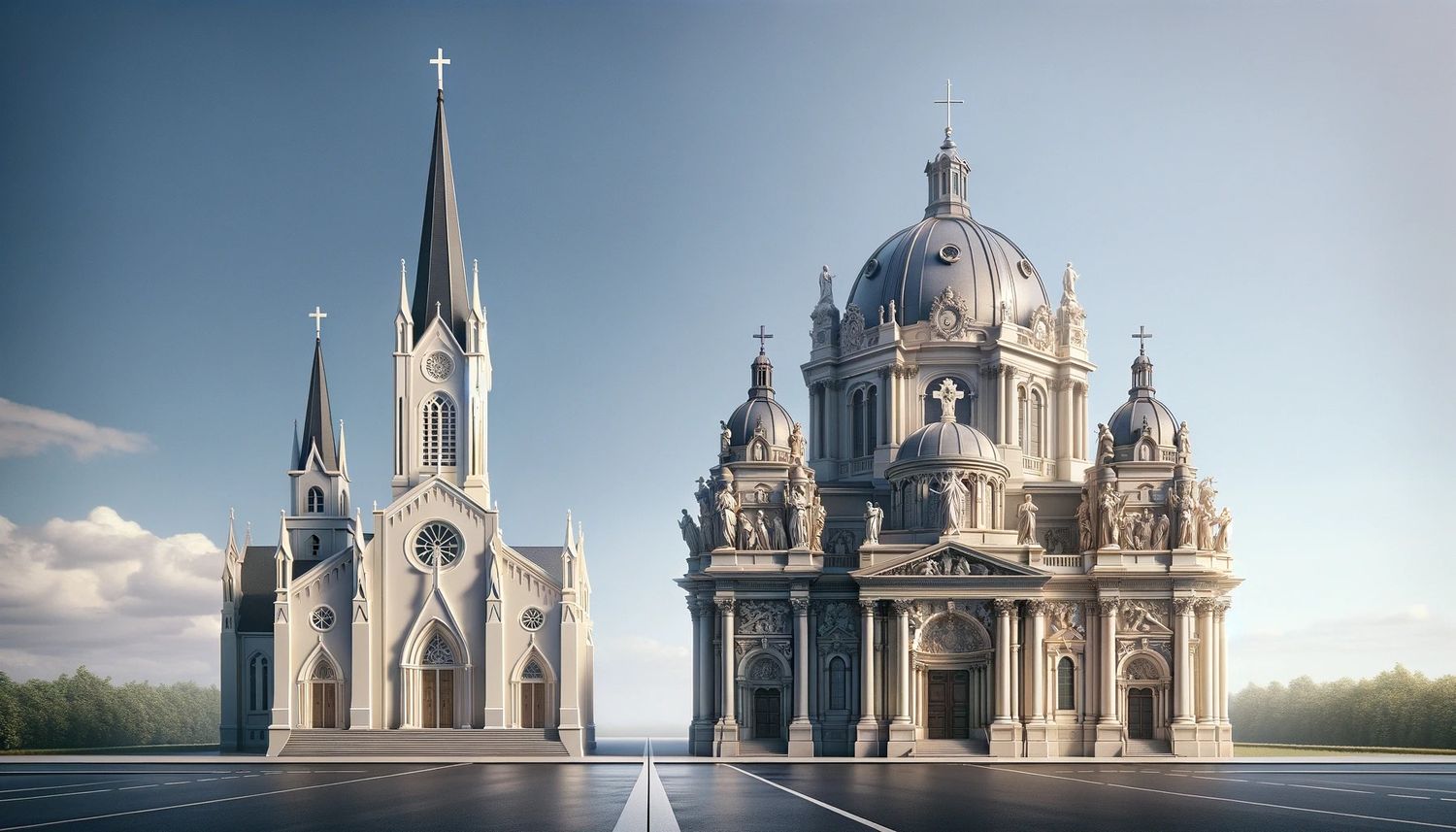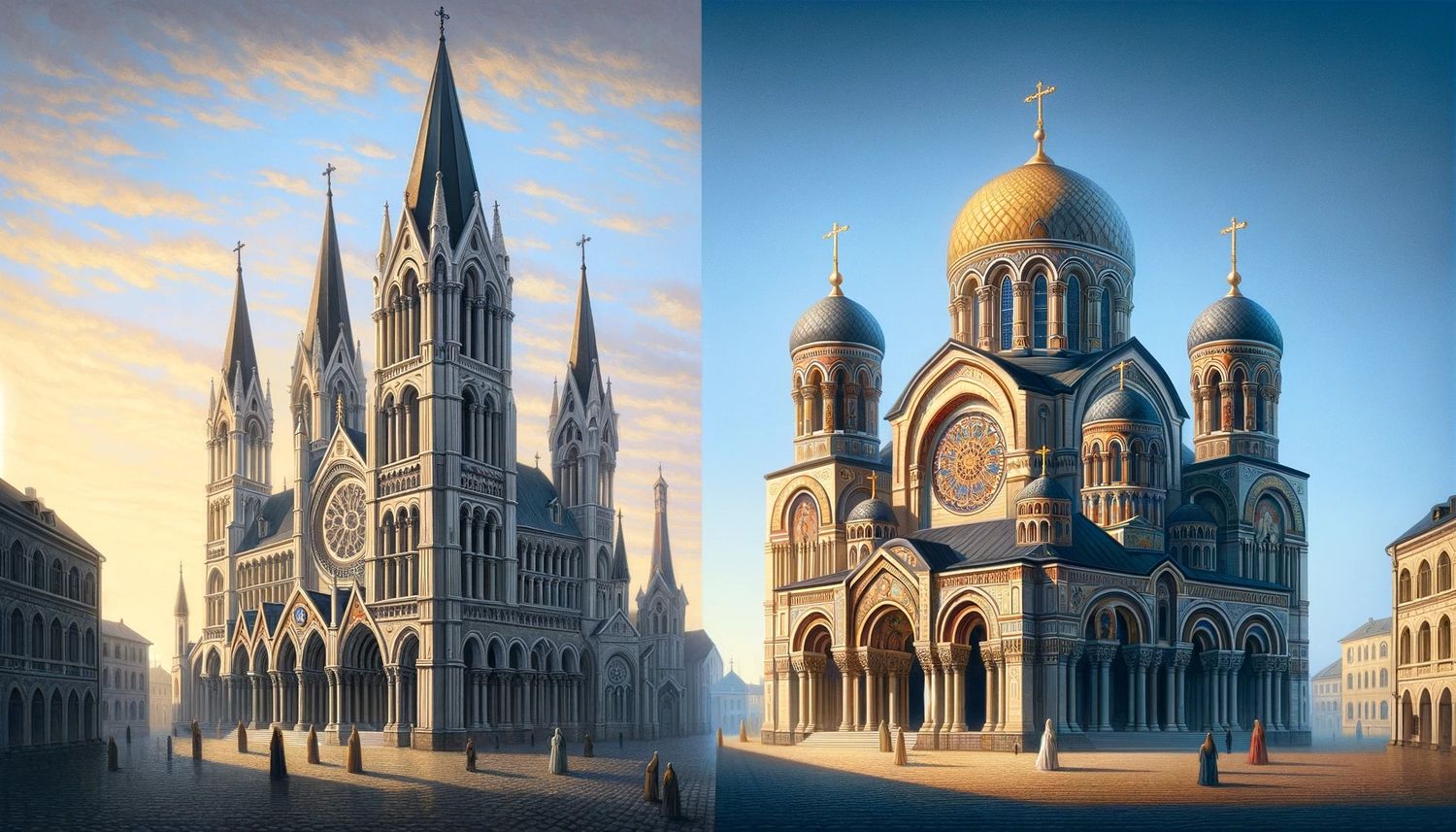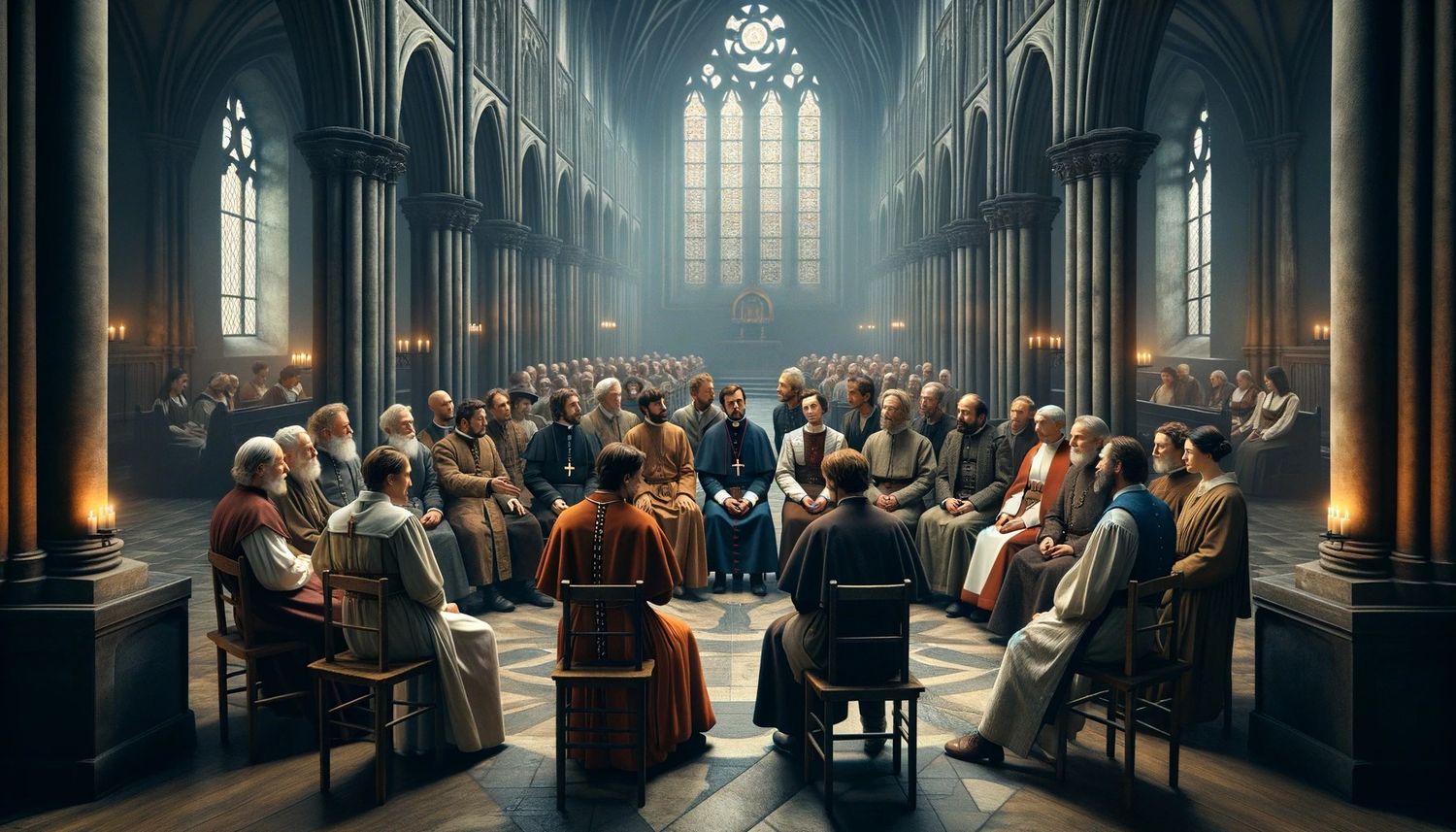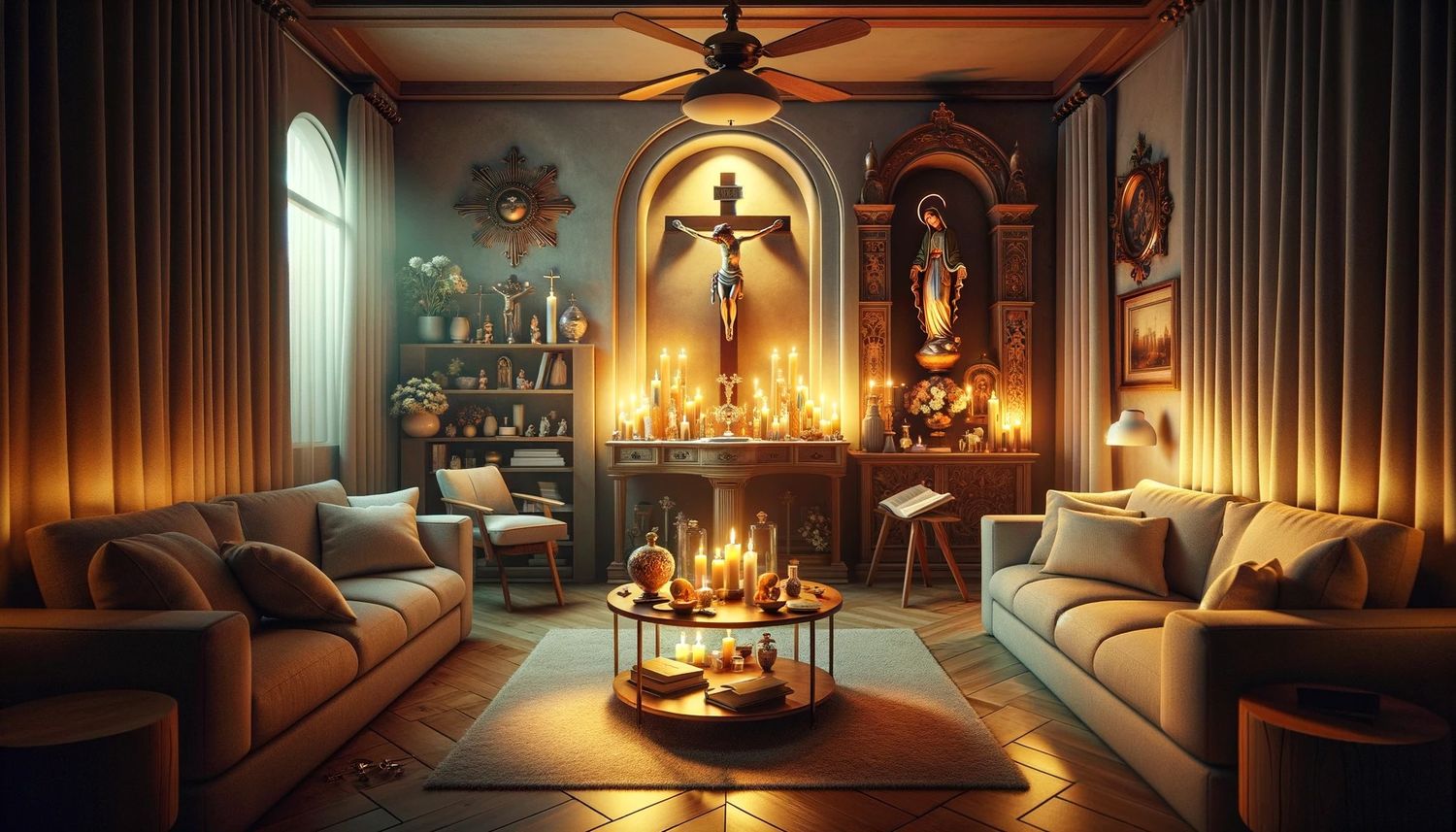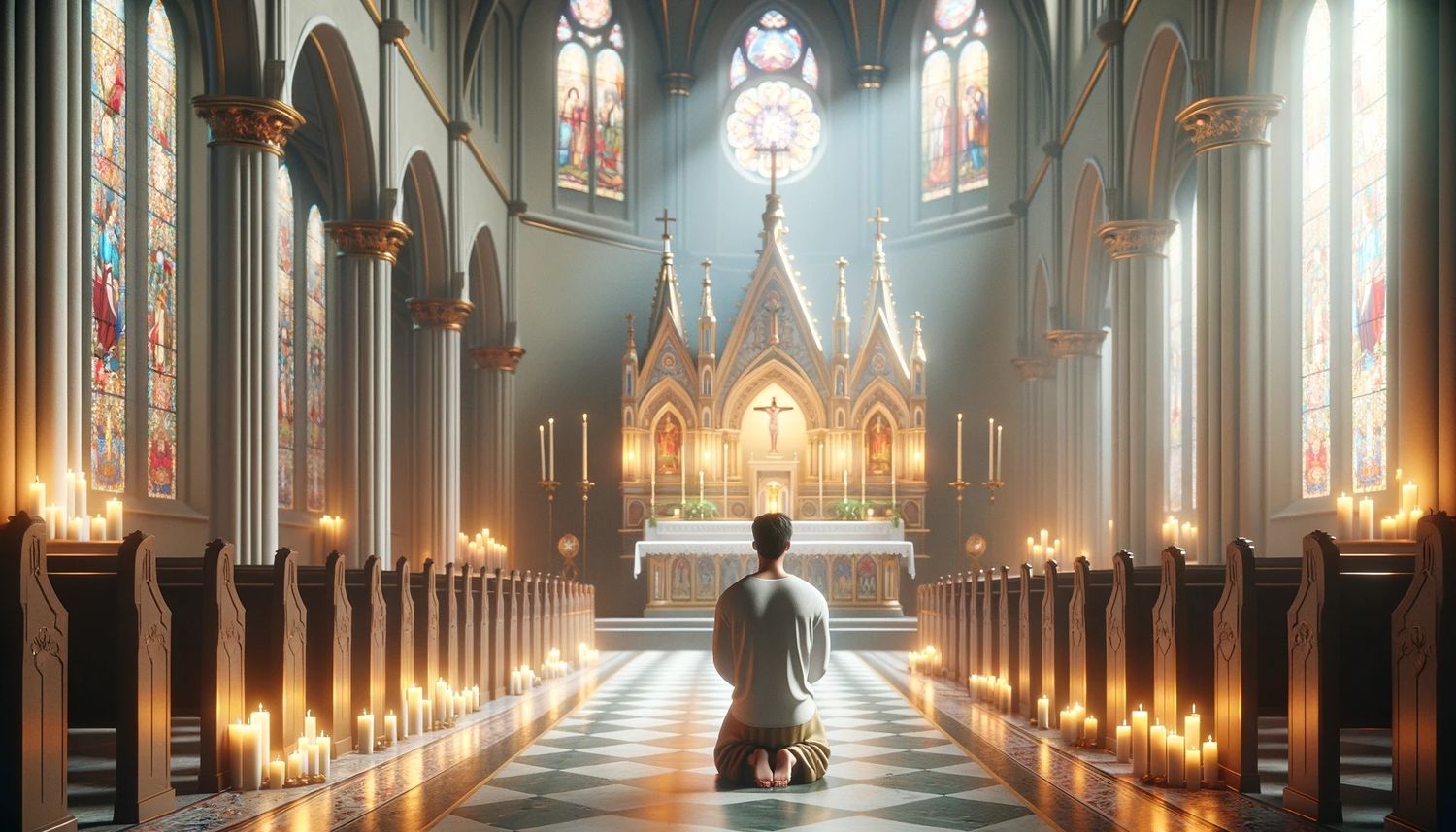Home>Theology and Spirituality>How Roman Catholicism Impacts Culture
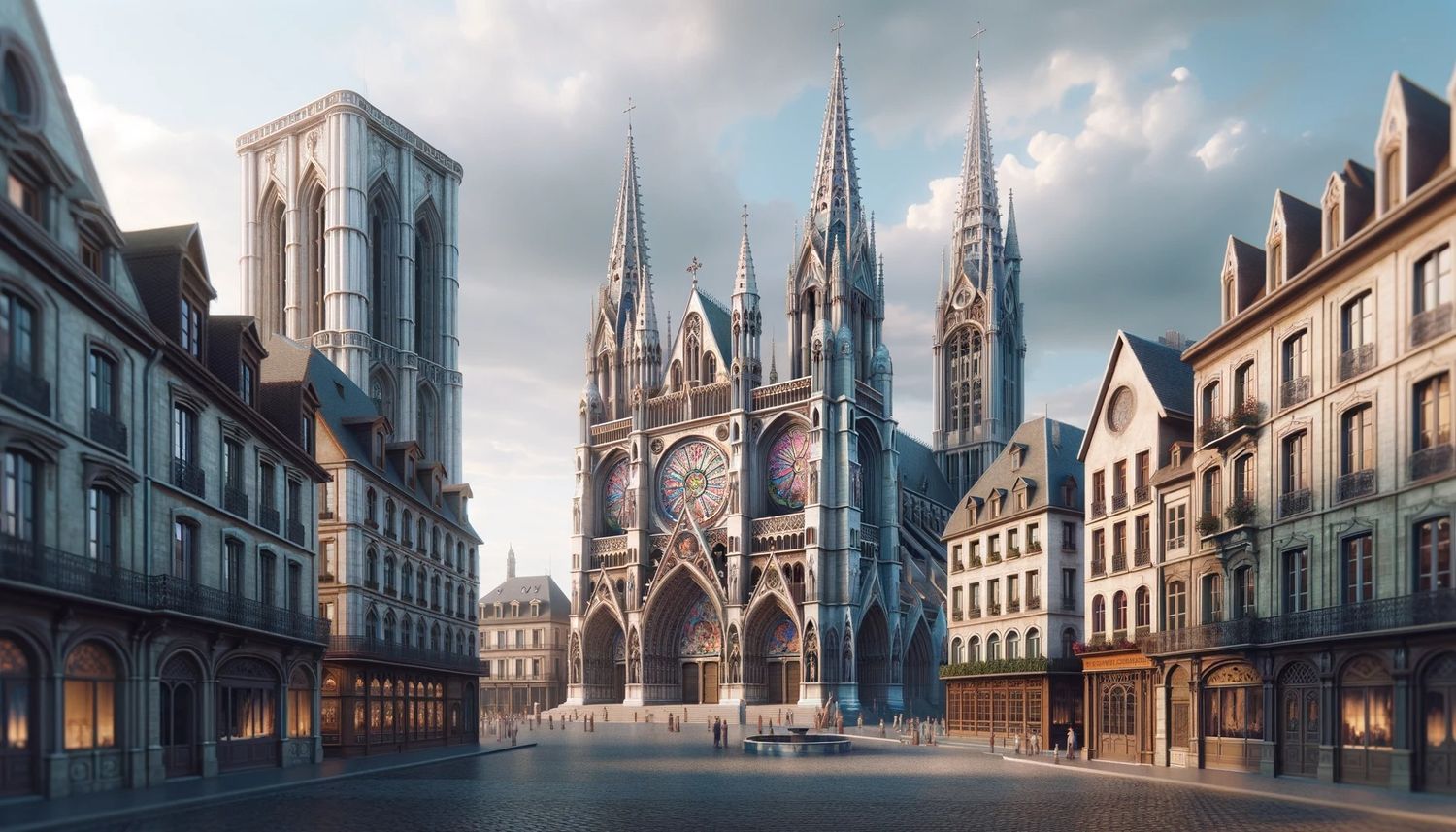

Theology and Spirituality
How Roman Catholicism Impacts Culture
Published: February 15, 2024
Peter Smith, Editorial Director at Christian.net, combines deep insights into faith, politics, and culture to lead content creation that resonates widely. Awarded for his contributions to religious discourse, he previously headed a major organization for religious communicators, enhancing dialogue on faith's societal impacts.
Explore the profound influence of Roman Catholicism on culture and society, delving into its theological and spiritual impact. Understand the far-reaching implications of this religious tradition.
(Many of the links in this article redirect to a specific reviewed product. Your purchase of these products through affiliate links helps to generate commission for Christian.net, at no extra cost. Learn more)
Table of Contents
Introduction
Roman Catholicism, one of the oldest and most influential branches of Christianity, has left an indelible mark on human culture throughout history. Its impact extends far beyond the realm of religion, permeating art, architecture, music, literature, education, science, and social and political issues. Understanding the profound influence of Roman Catholicism on culture provides valuable insights into the development of human civilization and the shaping of societal norms and values.
From the grandeur of cathedrals to the stirring compositions of sacred music, the legacy of Roman Catholicism is woven into the fabric of global culture. Exploring the historical roots and multifaceted influence of this religious tradition unveils a rich tapestry of human creativity, spirituality, and intellectual pursuit. In this article, we will delve into the multifaceted impact of Roman Catholicism on culture, examining its historical significance and enduring influence on various aspects of human expression and societal development.
History of Roman Catholicism
The history of Roman Catholicism is a compelling narrative that spans over two millennia, shaping the religious, cultural, and political landscape of the Western world. Its origins can be traced back to the teachings of Jesus Christ and the subsequent spread of Christianity throughout the Roman Empire. The early Christian community, despite facing persecution, gradually gained prominence, eventually becoming the official religion of the Roman Empire in the 4th century under Emperor Constantine.
The Great Schism of 1054 marked a significant turning point, leading to the division of Christianity into the Western (Roman Catholic) and Eastern (Eastern Orthodox) branches. This schism not only had profound religious implications but also contributed to the divergence of cultural and political developments in the East and West.
The medieval period witnessed the zenith of Roman Catholic influence, as the Church played a central role in the lives of individuals and communities. Monasteries served as centers of learning and preservation of knowledge, while cathedrals stood as architectural marvels, embodying the grandeur and spiritual aspirations of the faithful. The authority of the papacy reached its apex during this era, exerting immense influence over matters of faith, governance, and diplomacy.
The Renaissance and Reformation periods brought about seismic shifts in the history of Roman Catholicism. The revival of classical learning and the emergence of humanism spurred a reexamination of religious doctrines and practices. Concurrently, the Protestant Reformation led to the fracturing of Western Christianity, challenging the authority of the Catholic Church and giving rise to diverse theological and ecclesiastical movements.
The modern era has seen Roman Catholicism adapt to the complexities of a rapidly changing world. The Second Vatican Council in the 1960s ushered in a period of renewal and reform, seeking to engage with contemporary issues while upholding the core tenets of the faith. Today, Roman Catholicism continues to navigate the complexities of a globalized society, addressing social justice, interfaith dialogue, and ethical dilemmas in an increasingly interconnected world.
The history of Roman Catholicism is a testament to its resilience and adaptability, reflecting the enduring impact of this ancient faith tradition on the cultural, intellectual, and spiritual evolution of humanity.
Influence on Art and Architecture
The influence of Roman Catholicism on art and architecture is profound and far-reaching, encompassing centuries of creative expression and architectural marvels that continue to captivate and inspire. From the majestic cathedrals of Europe to the exquisite masterpieces adorning the Vatican, the visual legacy of Roman Catholicism reflects the fusion of faith, beauty, and human ingenuity.
Art
Roman Catholicism has been a patron of the arts, nurturing a rich tradition of religious art that serves as a visual testament to the faith's teachings and narratives. The iconic imagery of the Madonna and Child, the poignant depictions of the Crucifixion, and the awe-inspiring portrayals of saints and biblical scenes have permeated the artistic landscape, evoking profound spiritual contemplation and reverence. Renowned artists such as Michelangelo, Raphael, and Caravaggio created timeless masterpieces that adorned churches, palaces, and public spaces, elevating the divine and the human to transcendent heights.
The symbiotic relationship between Roman Catholicism and art has not only shaped the visual representation of religious themes but has also contributed to the preservation and transmission of cultural heritage. The Vatican Museums, home to an unparalleled collection of art spanning millennia, stand as a testament to the enduring legacy of artistic patronage and the preservation of human creativity.
Architecture
The architectural imprint of Roman Catholicism is epitomized by the grandeur of cathedrals, basilicas, and monastic complexes that stand as testaments to faith, craftsmanship, and spiritual aspiration. The Gothic cathedrals of Notre-Dame, Chartres, and Cologne, with their soaring spires and intricate stained glass windows, embody the transcendent aspirations of medieval Christianity, inviting worshippers to gaze heavenward in awe and reverence.
The Renaissance and Baroque periods witnessed the flourishing of architectural innovation, as exemplified by St. Peter's Basilica in Rome and the majestic domes of Florence. These architectural marvels, characterized by harmonious proportions, ornate embellishments, and celestial motifs, reflect the fusion of religious devotion and artistic excellence, creating spaces that inspire contemplation and transcendence.
The enduring influence of Roman Catholicism on art and architecture extends beyond the confines of Europe, permeating global cultural landscapes and inspiring diverse artistic expressions. From the colonial churches of Latin America to the ornate cathedrals of the Philippines, the visual language of Roman Catholicism continues to shape the built environment and evoke a sense of spiritual awe and cultural identity.
In essence, the influence of Roman Catholicism on art and architecture is a testament to the enduring power of faith to inspire and elevate the human spirit, transcending temporal boundaries and enriching the cultural tapestry of humanity.
Read more: What Is Roman Catholicism About
Impact on Music and Literature
The impact of Roman Catholicism on music and literature is a testament to the profound influence of religious devotion on artistic expression and cultural heritage. Throughout history, the rich tapestry of Roman Catholic liturgy, theology, and devotional practices has inspired a wealth of musical compositions and literary works that resonate with spiritual depth and emotional resonance.
Music
Roman Catholicism has been a fertile ground for the cultivation of sacred music, giving rise to a diverse repertoire of choral, vocal, and instrumental compositions that enrich the worship experience and transcendental contemplation. The tradition of Gregorian chant, with its ethereal melodies and timeless solemnity, embodies the ancient roots of Roman Catholic liturgical music, evoking a sense of timelessness and spiritual transcendence.
The Renaissance era witnessed the flourishing of polyphonic choral music, as exemplified by the compositions of Palestrina, Victoria, and Josquin des Prez. These intricate and harmonically rich compositions, often set to Latin texts drawn from the liturgy, reflect the interplay of faith, art, and human creativity, creating a sonic tapestry that elevates the soul and inspires devotion.
The Baroque period saw the emergence of monumental sacred compositions, with composers such as Johann Sebastian Bach and George Frideric Handel crafting oratorios, cantatas, and Mass settings of unparalleled grandeur and emotional depth. The enduring legacy of these compositions, such as Bach's "St. Matthew Passion" and Handel's "Messiah," continues to resonate with audiences worldwide, embodying the fusion of religious fervor and artistic genius.
The influence of Roman Catholicism on music extends to the modern era, with composers drawing inspiration from liturgical texts, hymnody, and spiritual themes to create contemporary sacred music that speaks to the complexities of faith and the human experience. From the ethereal compositions of Arvo Pärt to the stirring works of John Rutter, the tradition of Roman Catholic sacred music remains a vibrant and evolving force in the musical landscape.
Literature
The impact of Roman Catholicism on literature is equally profound, encompassing a rich tapestry of theological treatises, devotional writings, and literary masterpieces that reflect the interplay of faith, intellect, and human experience. The writings of theologians and mystics such as St. Augustine, St. Thomas Aquinas, and St. Teresa of Ávila have shaped the contours of Christian thought and spirituality, offering profound insights into the nature of God, the human condition, and the pursuit of divine union.
The literary tradition of Roman Catholicism extends to works of fiction, poetry, and drama that explore themes of sin and redemption, faith and doubt, and the moral complexities of human existence. The enduring impact of literary giants such as Dante Alighieri, whose "Divine Comedy" serves as a profound allegory of the soul's journey through Hell, Purgatory, and Paradise, exemplifies the fusion of religious symbolism and literary artistry.
In more recent times, the literary legacy of Roman Catholicism continues to inspire writers to grapple with existential questions, ethical dilemmas, and the search for meaning in a secular age. Authors such as Flannery O'Connor, Graham Greene, and Shusaku Endo have crafted works that delve into the complexities of faith, doubt, and the enigmatic presence of grace amidst the human condition, offering profound reflections on the enduring relevance of Roman Catholic themes in contemporary literature.
In essence, the impact of Roman Catholicism on music and literature is a testament to the enduring power of faith to inspire artistic creativity, intellectual inquiry, and spiritual contemplation, enriching the cultural landscape and resonating with the timeless aspirations of the human spirit.
Role in Education and Science
The influence of Roman Catholicism on education and science has been profound, shaping the intellectual landscape of Western civilization and contributing to the advancement of knowledge, learning, and scientific inquiry. Throughout history, the Catholic Church has played a pivotal role in the establishment of educational institutions, the preservation of classical learning, and the patronage of scientific exploration, leaving an indelible mark on the development of human knowledge and cultural heritage.
Read more: Who Founded Roman Catholicism?
Education
Roman Catholicism has been a staunch advocate for education, recognizing the intrinsic value of intellectual inquiry, moral formation, and the cultivation of the human intellect. The establishment of monastic schools and cathedral schools during the early medieval period laid the foundation for a vibrant tradition of learning, providing instruction in theology, philosophy, and the liberal arts. The monastic orders, particularly the Benedictines, became custodians of knowledge, preserving and transmitting classical texts and scientific treatises that would have otherwise been lost to history.
The founding of universities in medieval Europe, such as the University of Paris and the University of Bologna, marked a significant milestone in the history of education, fostering an environment of scholarly exchange and intellectual rigor. The scholastic tradition, exemplified by luminaries such as St. Thomas Aquinas and St. Bonaventure, sought to reconcile faith and reason, laying the groundwork for the synthesis of Christian theology and Aristotelian philosophy.
The Jesuit educational tradition, embodied in institutions such as the Gregorian University and Georgetown University, emphasized the pursuit of knowledge, critical thinking, and the integration of faith and learning. The enduring legacy of Catholic education is reflected in a global network of schools, colleges, and universities that continue to uphold the values of intellectual inquiry, ethical formation, and the pursuit of truth.
Science
The Catholic Church has also made significant contributions to the advancement of science, fostering an environment conducive to scientific inquiry and discovery. The patronage of scholars and scientists, from the medieval polymath Thomas Aquinas to the astronomer Galileo Galilei, reflects a tradition of engagement with the natural world and the pursuit of empirical knowledge.
The establishment of observatories, botanical gardens, and scientific academies by the Church exemplifies its commitment to the study of the natural world and the promotion of scientific research. The Jesuit order, in particular, made notable contributions to fields such as astronomy, cartography, and natural history, advancing the frontiers of scientific knowledge during the Age of Exploration and the Scientific Revolution.
In contemporary times, the Catholic Church continues to engage with scientific developments, addressing ethical and moral considerations in areas such as bioethics, environmental stewardship, and technological innovation. The pontifical academies and institutions dedicated to scientific research underscore the enduring commitment of Roman Catholicism to the pursuit of knowledge and the responsible application of scientific discoveries for the betterment of humanity.
In essence, the role of Roman Catholicism in education and science is a testament to its enduring commitment to the pursuit of knowledge, the cultivation of the intellect, and the harmonious integration of faith and reason, enriching the cultural and scientific heritage of humanity.
Influence on Social and Political Issues
The influence of Roman Catholicism on social and political issues has been profound, shaping the moral fabric of societies and contributing to the development of ethical frameworks, social justice initiatives, and political discourse. Throughout history, the Catholic Church has played a pivotal role in advocating for human dignity, promoting the common good, and addressing pressing social and political challenges.
In the realm of social issues, Roman Catholicism has been a vocal proponent of human rights, social equality, and the alleviation of poverty and suffering. The tradition of Catholic social teaching, rooted in principles of solidarity, subsidiarity, and the dignity of the human person, has provided a moral compass for addressing issues such as economic inequality, labor rights, and access to healthcare and education. The encyclicals of modern popes, from Leo XIII's "Rerum Novarum" to Pope Francis's "Laudato Si'," have addressed pressing social concerns, calling for ethical economic practices, environmental stewardship, and the protection of vulnerable populations.
In the political sphere, Roman Catholicism has exerted influence through its engagement with governance, diplomacy, and the promotion of peace and justice. The diplomatic efforts of the Holy See, as exemplified by the role of the papal nuncio and the Vatican's participation in international organizations, have sought to foster dialogue, conflict resolution, and the promotion of human rights on a global scale. The commitment to the principles of just war theory, nonviolence, and the pursuit of peace has informed the Church's stance on issues of war, conflict, and international relations.
The Catholic Church has also been a vocal advocate for the protection of human life, from conception to natural death, influencing debates on issues such as abortion, euthanasia, and capital punishment. The ethical considerations outlined in Catholic social teaching have contributed to public discourse on bioethical dilemmas, end-of-life care, and the sanctity of human life, shaping legislative debates and societal attitudes toward these critical issues.
In contemporary times, the Catholic Church continues to engage with social and political issues, addressing migration and refugee crises, advocating for environmental sustainability, and promoting interfaith dialogue and cooperation. The commitment to upholding human dignity, fostering social solidarity, and advancing the common good remains central to the Church's mission in navigating the complexities of a rapidly changing world.
In essence, the influence of Roman Catholicism on social and political issues reflects its enduring commitment to ethical principles, social justice, and the promotion of human flourishing, enriching the cultural and political landscape with a moral vision that transcends temporal boundaries.
Conclusion
In conclusion, the multifaceted impact of Roman Catholicism on culture is a testament to the enduring influence of this ancient faith tradition on the development of human civilization. From its rich historical legacy to its profound influence on art, architecture, music, literature, education, science, and social and political issues, Roman Catholicism has left an indelible mark on the cultural tapestry of humanity.
The history of Roman Catholicism, spanning over two millennia, reflects its resilience and adaptability in navigating the complexities of a changing world. From the early Christian community to the modern era, the Church has played a central role in shaping religious, cultural, and political landscapes, contributing to the intellectual and spiritual evolution of Western civilization.
The influence of Roman Catholicism on art and architecture is exemplified by the majestic cathedrals, timeless masterpieces, and architectural marvels that continue to inspire awe and reverence. The visual legacy of the Church reflects the fusion of faith, beauty, and human ingenuity, enriching the cultural landscape with transcendent expressions of religious devotion.
In the realms of music and literature, Roman Catholicism has inspired a wealth of sacred compositions, literary masterpieces, and theological treatises that resonate with spiritual depth and emotional resonance. The tradition of sacred music and the literary exploration of faith, doubt, and moral complexities reflect the enduring impact of Roman Catholicism on artistic creativity and intellectual inquiry.
The role of Roman Catholicism in education and science underscores its enduring commitment to the pursuit of knowledge, the cultivation of the intellect, and the harmonious integration of faith and reason. The Church's historical contributions to education, preservation of classical learning, and patronage of scientific inquiry have enriched the cultural and scientific heritage of humanity.
In addressing social and political issues, Roman Catholicism has been a vocal advocate for human dignity, social justice, and the promotion of peace and justice. The tradition of Catholic social teaching and the Church's engagement with governance, diplomacy, and ethical considerations have contributed to the development of ethical frameworks and the advancement of human rights on a global scale.
In essence, the enduring influence of Roman Catholicism on culture reflects its profound impact on the human experience, enriching the cultural, intellectual, and spiritual landscape with a legacy that transcends temporal boundaries. The exploration of its multifaceted influence provides valuable insights into the enduring relevance of faith, art, knowledge, and ethical principles in shaping the cultural tapestry of humanity.
